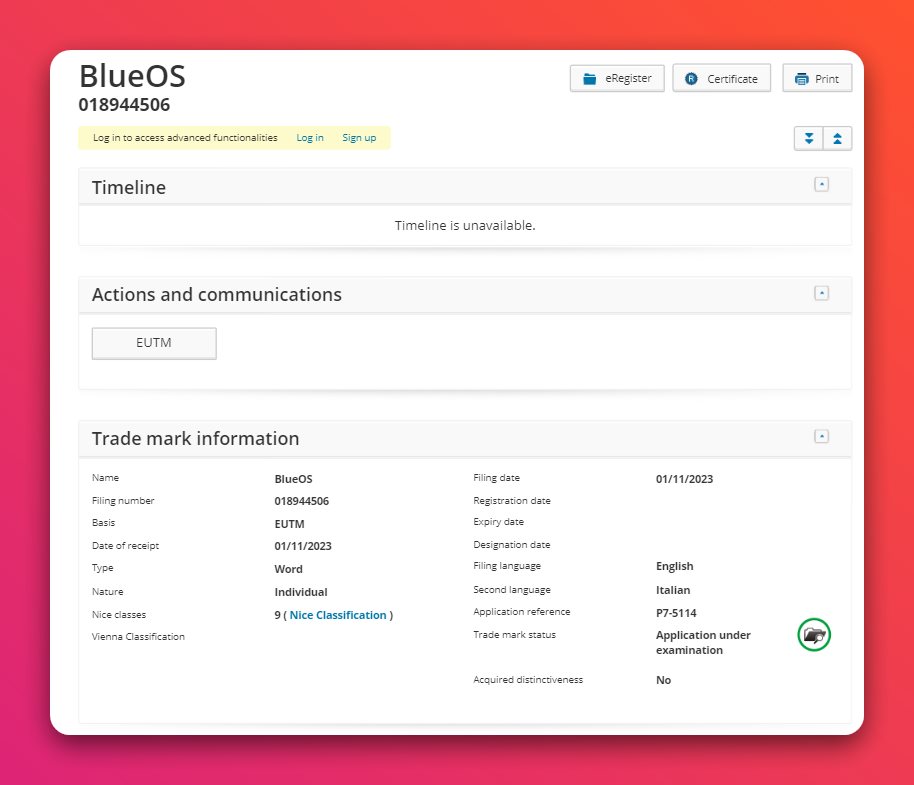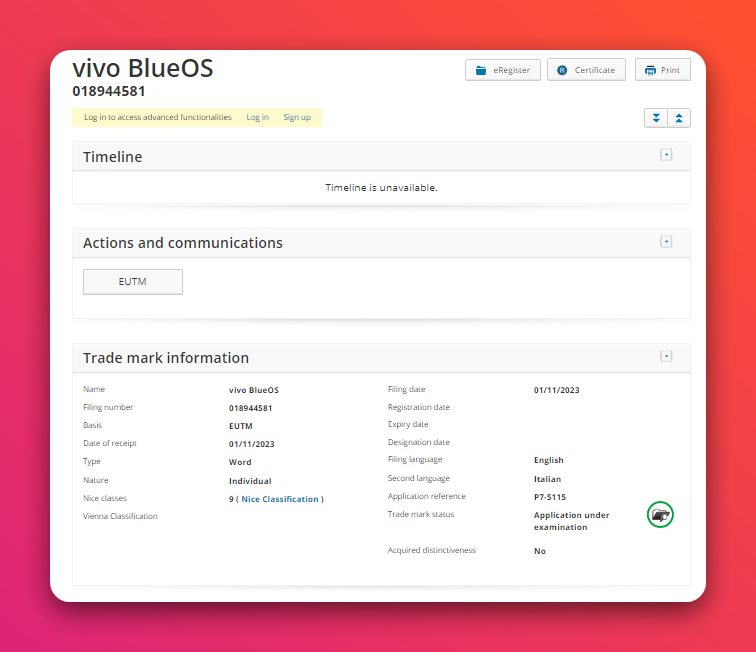At the 2023 Vivo Developer Conference, the company introduced a self-developed Operating System – BlueOS. Primarily meant for smart wearables and smart home devices, the OS uses Rust programming language. It supports multiple Posix standard kernels, Linux Kernels, and a special AI service engine for compatibility with large AI models. The Vivo BlueOS trademarks have just surfaced on EUIPO which confirms its global launch in the coming days.


Must See: After Huawei and Xiaomi, Vivo is here with its self-developed operating system, BlueOS
There are a total of four trademark listings that appeared on EUIPO, including Vivo BlueOS, BlueOS, Vivo BlueLM, and BlueLM. All these are trademarks for the name or “Word”. The BlueOS and Vivo BlueOS are described as “Operating systems for mobile phones, smartphones, smart watches, smart glasses, tablet computers, notebook computers and smart televisions.“


Meanwhile, the BlueLM seems like an AI assistant that will allow the system to generate text, and video, understand text, organize and collect data, and simulate conversations. Further, the trademark description describes it as “
downloadable computer programs and downloadable computer software for creating and generating text; artificial production of human speech and text; machine-learning-based language and speech processing software; natural language processing, generation, understanding, and analysis; collecting, analyzing, and organizing data in the field of deep learning; simulating conversations.”
Vivo’s BlueOS Features
- Multi-Device Support: BlueOS supports a variety of devices, ranging from 200Mhz processors with 32MB RAM to 4GHz processors with 24MB RAM.
- Enhanced Rendering Efficiency: The OS offers a 48% improvement in rendering efficiency, ensuring smoother and faster display performance.
- Memory Consumption Optimization: BlueOS consumes 67% less memory compared to other operating systems, resulting in better overall device performance.
- Security and Privacy Focus: BlueOS prioritizes user privacy and security, with the system framework built using the Rust language, known for its resistance to security vulnerabilities.
- AI Integration: The operating system integrates AI-based capabilities, supporting functions such as code generation, as well as image and text generation.
- Voice-Activated Watch Faces: BlueOS introduces a new smart interaction experience for smartwatches, enabling users to change watch faces using voice commands.
- BlueXLink Connectivity: The OS facilitates seamless data transfer between multiple devices through BlueXLink, enabling efficient connectivity and data sharing between various devices.
- NFC Support: BlueOS supports various functionalities, including transportation cards, access cards, and NFC car keys, making it a versatile operating system for different applications.
Vivo will launch Vivo Watch 3 based on BlueOS on November 13 in China.
Related:
- After Huawei and Xiaomi, Vivo is here with its self-developed operating system, BlueOS
- Vivo Watch 3 design teaser reveals a round dial, crown, and two color options
- Vivo S18 series color options leaked ahead of launch
- Vivo X100 series with OriginOS 4, Vivo Wach 3 set to launch on November 13
(via)






